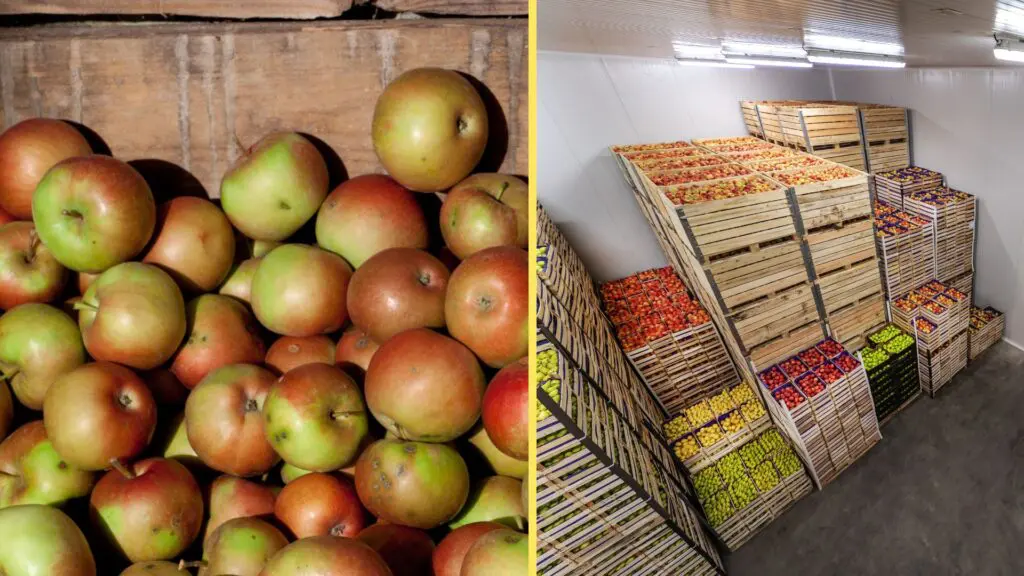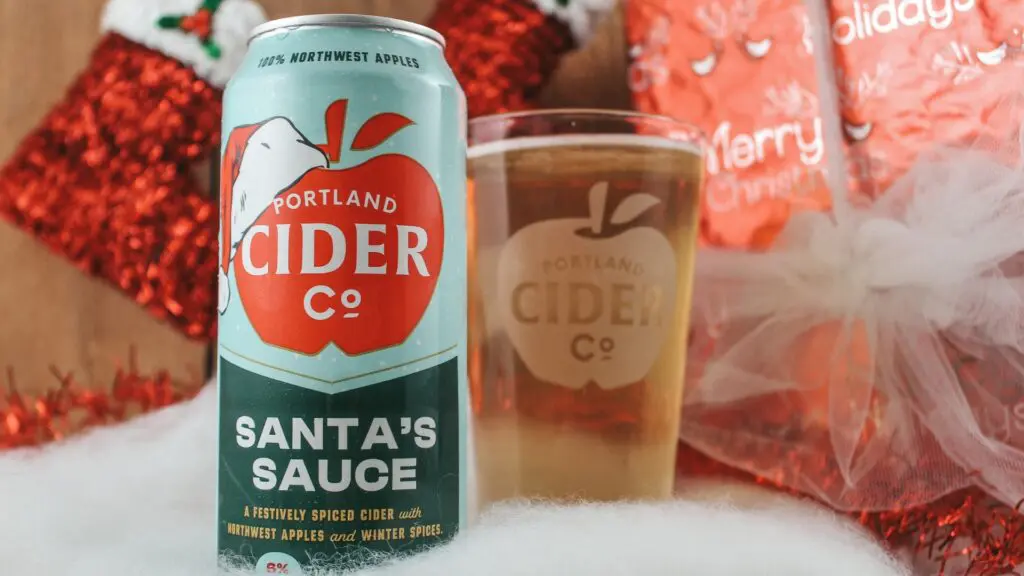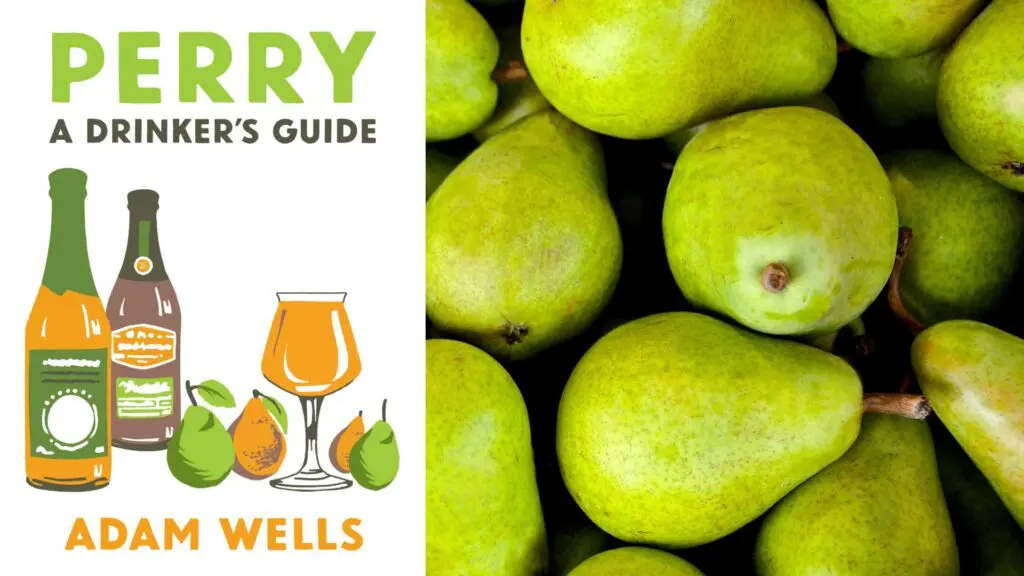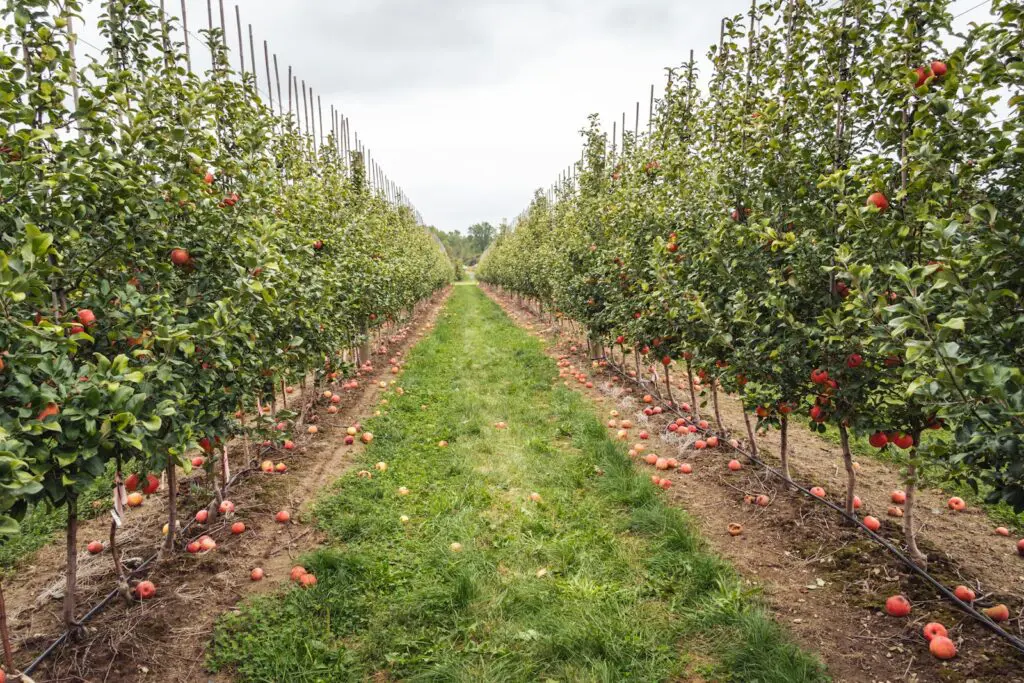Apple Tales with Darlene Hayes
There are a handful of apple varieties that just say “New York” to me, and Northern Spy is one of them. Some apples have made homes and reputations for themselves in any number of other places — like Newtown Pippin — but even though Northern Spy is grown elsewhere, New York seems to suit it best.
Spy, as it is often called, originated as a seedling in western New York, mostly likely in the late 18th or very early 19th century, on land owned by Heman Chapin (1776-1843). The Chapin family had already had a long history in North America by the time Heman was born. The family’s founder, Deacon Samuel Chapin (1598-1675), arrived in the Massachusetts Bay Colony in the early 1630s, and was one of the early European inhabitants of what became Springfield, Mass. His many descendants include American presidents (Grover Cleveland, William H. Taft), poets (T.S. Eliot), abolitionists (Henry Ward Beecher, Harriet Beecher Stowe), musicians (Harry Chapin, Mary Chapin Carpenter) and Revolutionary War heroes (Gen. Israel Chapin).
After the war, Gen. Israel Chapin was asked by a couple of land speculators to help them negotiate the purchase of a massive tract from the Six Nations of the Haudenosaunee Confederacy, including western New York, which up to that point had remained largely unoccupied by Europeans or those of European descent. It is probably through this family connection that Heman Chapin and his brother, Oliver (1765-1822), found out about the land deal, each buying a parcel in the early 1790s in what would become East Bloomfield in Ontario County. This was still wild country, so it would have taken some time to clear land and build houses, their farms slowly taking shape as they created fields for grazing and planted apple seeds to start an orchard.
The first printed mention of the Northern Spy was in an October 1842 issue of The Cultivator, where it was included on a list of apples recommended for a small garden written by a J.J. Thomas of Macedon, N.Y. A few years later, accounts of the Northern Spy went viral. In publications such as The Genesee Farmer and The Magazine of Horticulture, Spy was described as new and exciting with the promise to become a well-beloved market apple. Its chief proponents were George Ellwanger and Patrick Barry, the two owners of the Mount Hope Garden and Nurseries, one of the largest of the nurseries that sprang up in early 19th century Rochester, N.Y. Their motivation was clear: They advertised that they had thousands of two-year-old trees ready for sale, an indication the apple had a good reputation, at least locally, well before 1840. It has been in commercial cultivation ever since, though not grown to the levels it was 100 years ago.
The specifics of where the seeds came from and which of the Chapin’s farms it sprouted on, or moved to, are a little murky, as with so many apples originating at this time. The really interesting question, though, is how did it get a name like Northern Spy? Many of its contemporaries were named for their shape or color (Sheepnose or Golden Russet), or the man (almost always) whose farm it came from (Bullock’s Pippin), or the person who popularized it (Baldwin). But Northern Spy? What was that about?
In 1996, a man named Conrad D. Gemmer proposed an answer to the question in a letter to the journal of the North American Fruit Explorers. He claimed to have come across a letter to the editor in an “obscure gardening magazine” dated “around 1853.” Gemmer paraphrases the writer, “JBK,” as saying that everyone around Rochester, N.Y., knew that the apple was named for “the ‘hero’ of that notorious dime novel The Northern Spy, but that nobody will come out and admit it.”
Gemmer went on to explain that the book had been written anonymously, published “sub-rosa” and circulated among “hard-core abolitionists circa 1830,” and the name was probably attached to the apple by “some smart-aleck kid” as both Chapin and Humphrey were “eminently respected gentlemen.” It’s an interesting story and, in fact, there was a novel published in the 19th century called The Northern Spy or, The Fatal Papers written by J. Thomas Warren. The problem, though, is that among the many characters in the book are Confederate soldiers, and since the Confederate States of America wasn’t formed until 1861, it seems unlikely to the source the name of an apple already well known by the 1840s.
A better option, at least in terms of the time frame, is James Fennimore Cooper’s book The Spy: A Tale of the Neutral Ground. Published in 1821, it tells the story of a man spying on the British and British sympathizers during the Revolutionary War. It was apparently inspired by things Cooper learned from his friend John Jay, commonly thought of as the “founding father” of U.S. counterintelligence. Jay was also a colleague of both Gen. Israel Chapin and his son, Israel Chapin, Jr. In fact, many of the Chapins were soldiers, including Heman and Oliver’s father, Charles. There is even a book about them all, Chapins Who Served in the French and Indian Wars, 1754-59: the Revolutionary War, 1775-83, the War of 1812-15, and others by Charles Wells Chapin (1895). Might one of them have been a spy? No lists from that time exist, so who’s to say?
Usually when I set about to write about an apple I try to find as many examples of cider made from it as I can. This time will be different. The cidermakers at Eve’s Cidery in Van Etten, N.Y., have been making single-variety Northern Spy ciders for many years, and I was fortunate enough to have seven of them (they did not make one in 2018), allowing me to get an idea of how ciders from this apple might age as well as any vintage variation. All had some common elements, such as the high acid that supported graceful aging, as well as lemony aromas and flavors.
The oldest, from 2014, seemed a little faded, but that may be due to what seems to have been a rather loose cork (all were closed with a cork and cage). The 2016 vintage was the richest with a fuller body and longer finish. The three vintages starting with 2019 were made using wild yeast and all had a savory quality that wasn’t evident in the others. It was a fascinating experience and one that I am anxious to repeat with other apples.
Eve’s Cidery – Van Etten, N.Y.
Northern Spy Cider
2104 | Dry; green apple skin, lemon pith, cardboard, slightly faded; pétillant
7% ABV
2015 | Dry; ripe, dried, and baked yellow apple, lemon peel, lemon pith, yellow plum skin; sparkling
7.1% ABV
2016 | Dry; fresh ripe yellow apple, fresh lemon juice, lemon zest, honeysuckle, baked apple, dried pineapple, almond, yellow pear; sparkling
9.2% ABV
2017 | Dry; ripe yellow apple, lemon juice, slate, ripe peach, rose, persimmon, slight bitterness; sparkling
7.5% ABV
2019 | Dry; ripe yellow apple, lemon drop candy, lemon juice, savory green herbs, brioche, salt, shoyu, tart just ripe peach, yellow plum skin; sparkling
8% ABV
2020 | Dry; ripe yellow apple, quince, ripe peach, lemon juice, pineapple, slate, savory herbs, very fruity; sparkling
8.4% ABV
2021 | Dry; ripe yellow apple, savory green herbs, candied lemon, tart green apple skin, pear skin, just ripe pear, slate, green plum, slight bitterness; sparkling
8% ABV









